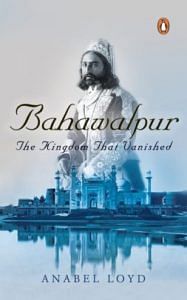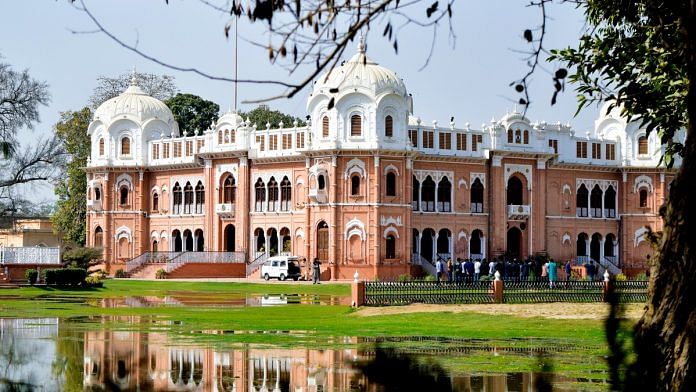Seventy years later, the tearing apart of the subcontinent in the violence of Partition appears not only as the pain-filled birth process of a new country but also the shrugging off of millennia of Indian history. That long narrative should have remained as much a part of Pakistan and the memory of its people as of India and hers. However, in India, Independence was merely the end of one more invading empire that would itself disappear, one more episode in a far longer story. In Pakistan, history ended with Partition, Pakistan Zindabad.
Meanwhile, the servants of that last empire continued for the time being to busy themselves in the separate affairs of two countries. When the new finance minister arrived in his new office in Karachi, the capital of his new country, on 15 August 1947, he found nothing there except one table. The treasury was almost as bare. Although Pakistan was owed 18.75 per cent of the current cash balances in Delhi, Rs 750 million, to be paid in two instalments, the country was in immediate debt to the tune of almost Rs 400 million and had hardly enough cash to pay the army for four months. governor general Jinnah’s loan of Rs 200 million from the nizam of Hyderabad is recorded. His close relationship with the wealthy nawab of Bahawalpur yielded a further Rs 7 crore (70,000,000), funds that were more in the nature of a gift, both to the Quaid and to the new Muslim nation.
All the salaries of government departments for one month were also met by Bahawalpur. Given Penderel Moon’s concerns about the Bahawalpur state finances, it seems likely that much of the funding was supplied from the nawab’s personal wealth, or from the confluence that had been of such concern to the British authorities in the past, where state and royal treasuries merged. For a brief period of independence, Bahawalpur was the gift that kept on giving, until it disappeared.
Also read: Discovery of Pakistan – How Modi & Shah have dramatically re-hyphenated India with Pakistan
If Jinnah was more favourably inclined towards the princes than the new regime in India, any idea of their nominally independent states surviving within Pakistan for long, in the new world after August 1947, now seems incredible. Especially so after Jinnah died in September 1948. The states and frontier regions ministry (SAFRON) was set up in July 1948 under Jinnah himself while several experienced oldstyle India hands, Pakistani and British, initially became governors or commissioners in the Pakistan princely states. Yaqoob Khan Bangash described the integration of the princely states into Pakistan, pointing out that the appointment of prime ministers of states had always been a contentious issue between rulers and the political department.
The British, we know, had latterly been particularly keen to have a hand on, if not a hand in, appointments in Bahawalpur, to safeguard their financial interest in the state. The Pakistan government equally wished to exercise a level of control over any state. In the case of Bahawalpur, where the army was of considerable strength, there was an additional imperative to bring such a regular force under government control. Bahawalpur also had other commodities of value to the centre. By the time the state merged fully into Pakistan, its wealth was being well spent. There was free education and healthcare, grants for university seats in Lahore and scholarships abroad, all funded by the state treasury or the nawab himself.
Literacy rates were the highest in Pakistan, reputedly higher than Pakistan today, and the state bureaucracy was highly educated and well-trained. Just as Sadiq Muhammad Khan had once spotted a potential loyal servant in Kapurthala, he had an eye for talent beyond Bahawalpur and was in a position to pay highly for services. After 1954 the revenue and canal departments of West Pakistan were among those run by former Bahawalpur bureaucrats. In October 1948, the nawab of Bahawalpur signed the Supplementary Instrument of Accession for Bahawalpur. By the end of the year there were changes in the administration in Bahawalpur as Penderel Moon moved on to take up his final post in India, in Himachal Pradesh, and Prime Minster Gurmani prepared to join the Pakistan government as a minister without portfolio.
In 1949, Gurmani signed the Karachi Agreement, establishing a ceasefire after the first Indo-Pakistan war and the Line of Control between the areas of Indian and Pakistan-administered Kashmir. Lt Col. A.S.B. Shah, permanent secretary at SAFRON, was aware of the nawab’s desire to have his own choice of an Englishman as his new prime minister in Bahawalpur. This would reinstitute the pre-Partition status quo of British PM and Indian revenue minister, but the Pakistan government was now in a position to insist on the appointment of their own nominee.
Also read: Josh Malihabadi, the Urdu poet who migrated to Pakistan for his love of Urdu
Colonel John, later Sir John Dring, who had been chief secretary to the Government of the North-West Frontier Province (NWFP), was given the post. The government continued to flex its muscles when Lt Col. Shah informed the nawab that control and command of the Bahawalpur army must be handed over to a government-appointed commanding officer, taking over from Brigadier Marden. Marden, by now advanced to General Marden, was appointed controller-in-general of properties by the nawab. A demand by Shah for a sanction from the nawab of army expenses of Rs 1 crore (10 million) per annum on top of an immediate Rs 1 crore for expenses in upgrading and retraining was an extra sting in the tail.
The nawab countered with a request to maintain half the Bahawalpur forces as his personal bodyguard under his direct command. Shah argued against this on grounds of the inevitable inferiority in respect of training, efficiency and resources of such a force compared with the Pakistan Army. Bangash is correct in regarding these measures as ‘a clear attempt by the Government of Pakistan to resurrect the doctrine of paramountcy in an even more powerful form through the complete takeover of the states’ forces’ and ‘the beginning of a process of ultimate integration of the whole state with Pakistan’.
Also read: Modi’s new citizenship law will rip open the wounds of Partition
Shah knew exactly what he was doing, and the time between Independence and the complete integration and loss of statehood for the population and ruling family of Bahawalpur was little more than a gap between lines in the story of Pakistan over the past seventy years. Colonel Dring had a difficult time as prime minister of Bahawalpur and political agent of the Pakistan government. Bangash notes ‘numerous misunderstandings’ and quotes Shah remarking, in a telegram to Prime Minister Liaquat Ali Khan,
I still fail to understand why he was so anxious to rush me through everything in one afternoon, and why, when he saw that I was going to tackle my task in my own way, he took it upon himself to present me with a fait accompli, and why he sent the ruler away on tour and himself proceeded to Karachi.
Shah was inclined to ascribe Dring’s unsatisfactory behaviour towards Pakistan to latent British imperialism: ‘Unfortunately he has still not reconciled himself completely to the fact that the British rule has gone and that we meant to do our work in our own way.’
 This excerpt from Bahawalpur: The Kingdom That Vanished by Anabel Loyd has been published with permission from Penguin Random House India.
This excerpt from Bahawalpur: The Kingdom That Vanished by Anabel Loyd has been published with permission from Penguin Random House India.







At least in India we utilized the administrative talents of the former rulers of several erstwhile princely states for governing this country.